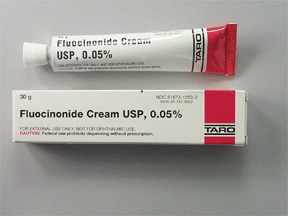
Fluocinonide Coupons & Savings Card – Discount Prices from $8.44
Generic for: Vanos
My prescription
Edit
15GM of 0.05%, Fluocinonide (1 Bottle)
Select pharmacy

CVS
$20.39
COUPON PRICE
Walmart
$8.44
COUPON PRICE
Albertsons
$10.70
COUPON PRICE
Walgreens
$14.36
COUPON PRICEFluocinonide savings card
Show this card to your pharmacist
Walmart
$8.44
BIN
ID
PCN
GRP
019876
LH0AFE309A
CHIPPO
LHX
Powered by
More prescriptions for skin allergy
More prescriptions for skin allergy
Fluocinonide dosage forms
Dosage Quantity Price from Per unit 15GM of 0.05% 1 Tube $18.14 $18.14 15GM of 0.05% 2 Tubes $26.06 $13.03 15GM of 0.05% 3 Tubes $29.94 $9.98 120GM of 0.05% 1 Tube $43.03 $43.03 120GM of 0.1% 1 Tube $43.03 $43.03 120GM of 0.1% 2 Tubes $59.76 $29.88 120GM of 0.1% 3 Tubes $76.48 $25.49 120GM of 0.05% 2 Tubes $59.76 $29.88 120GM of 0.05% 3 Tubes $76.48 $25.49
| Dosage | Quantity | Price from | Per unit |
|---|---|---|---|
| 15GM of 0.05% | 1 Tube | $18.14 | $18.14 |
| 15GM of 0.05% | 2 Tubes | $26.06 | $13.03 |
| 15GM of 0.05% | 3 Tubes | $29.94 | $9.98 |
| 120GM of 0.05% | 1 Tube | $43.03 | $43.03 |
| 120GM of 0.1% | 1 Tube | $43.03 | $43.03 |
| 120GM of 0.1% | 2 Tubes | $59.76 | $29.88 |
| 120GM of 0.1% | 3 Tubes | $76.48 | $25.49 |
| 120GM of 0.05% | 2 Tubes | $59.76 | $29.88 |
| 120GM of 0.05% | 3 Tubes | $76.48 | $25.49 |
Fluocinonide Warnings
This medication comes with important safety information that you should be aware of to minimize potential risks. Please consider the following warnings and consult your healthcare provider if you have any concerns or questions.
Hormonal Changes: Using fluocinonide (Vanos) in large quantities, over extended periods, or on children may reduce the production of essential hormones in the body. It is crucial to use this medication strictly as prescribed by your healthcare provider. Avoid applying more than directed or using it for longer than advised. Children using fluocinonide (Vanos) may require more frequent medical supervision.
Skin Reactions: Overuse of fluocinonide (Vanos) or prolonged application can lead to adverse skin effects such as thinning, stretch marks, spider veins, burning, itching, irritation, dryness, follicle inflammation, pustules, changes in skin color, infections, and rashes. These reactions are more likely if the treated skin area is covered with a bandage or dressing. Apply only small amounts as prescribed and for the shortest duration necessary to alleviate symptoms.
Skin Infections: This medication may impair your body's ability to combat infections, including those on the skin. Healing of cuts and wounds may be delayed. The risk of infection increases with prolonged use of the medication. Discontinue use and contact your healthcare provider immediately if you experience redness, pain, swelling, or pus at the application site.
Allergic Reactions: Persistent skin irritation may indicate an allergy to fluocinonide (Vanos). Report any such symptoms to your healthcare provider. Seek medical attention promptly if you experience hives, rashes, swelling of the lips or tongue, or difficulty breathing after using this medication.
No specific contraindications have been identified for this medication. Always follow your healthcare provider's instructions and report any unusual symptoms or side effects.
Fluocinonide Side Effects
Common side effects:
- burning at the application site
- stinging at the application site
- itching at the application site
- dryness at the application site
- redness at the application site
- headaches
- stuffy nose
Less common but important to monitor:
- dry or irritated skin
- inflamed hair follicles
- acne
- stretch marks
- skin thinning
- skin discoloration
- extreme and unwanted hair growth
- worsening skin infections
Serious side effects:
- allergic reaction (rash, itching/swelling of the face, tongue, or throat)
- severe dizziness
- trouble breathing
- unusual tiredness
- weight loss
- swelling of the ankles or feet
- increased thirst or urination
- vision problems
Fluocinonide Interactions
Fluocinonide is a potent topical corticosteroid used to treat various skin conditions. While it is applied to the skin, some of the medication can be absorbed into the bloodstream, potentially leading to interactions with other substances.
One notable interaction involves the antifungal medication Voriconazole. When used together, voriconazole can inhibit the breakdown of fluocinonide in the body, leading to increased levels of the corticosteroid. This may heighten the risk of side effects such as adrenal suppression, a condition where the adrenal glands produce insufficient hormones. Therefore, it's important to monitor for signs of adrenal dysfunction if these medications are used concurrently.
Additionally, using fluocinonide alongside other corticosteroids, whether applied to the skin or taken orally, can result in excessive corticosteroid exposure. This increases the likelihood of systemic side effects, including Cushing's syndrome, characterized by weight gain, thinning skin, and high blood sugar levels. To minimize these risks, it's advisable to avoid combining multiple corticosteroids unless specifically directed by a healthcare provider.
It's also important to be cautious when applying other topical products to the same area as fluocinonide. For instance, using emollients or moisturizers simultaneously may dilute the corticosteroid, potentially reducing its effectiveness. Conversely, applying other potent topical steroids in conjunction with fluocinonide can lead to excessive corticosteroid exposure, increasing the risk of side effects.
To ensure safe and effective use of fluocinonide, inform your healthcare provider about all medications, supplements, and over-the-counter products you are currently using. This will help identify potential interactions and allow for appropriate adjustments to your treatment plan.
